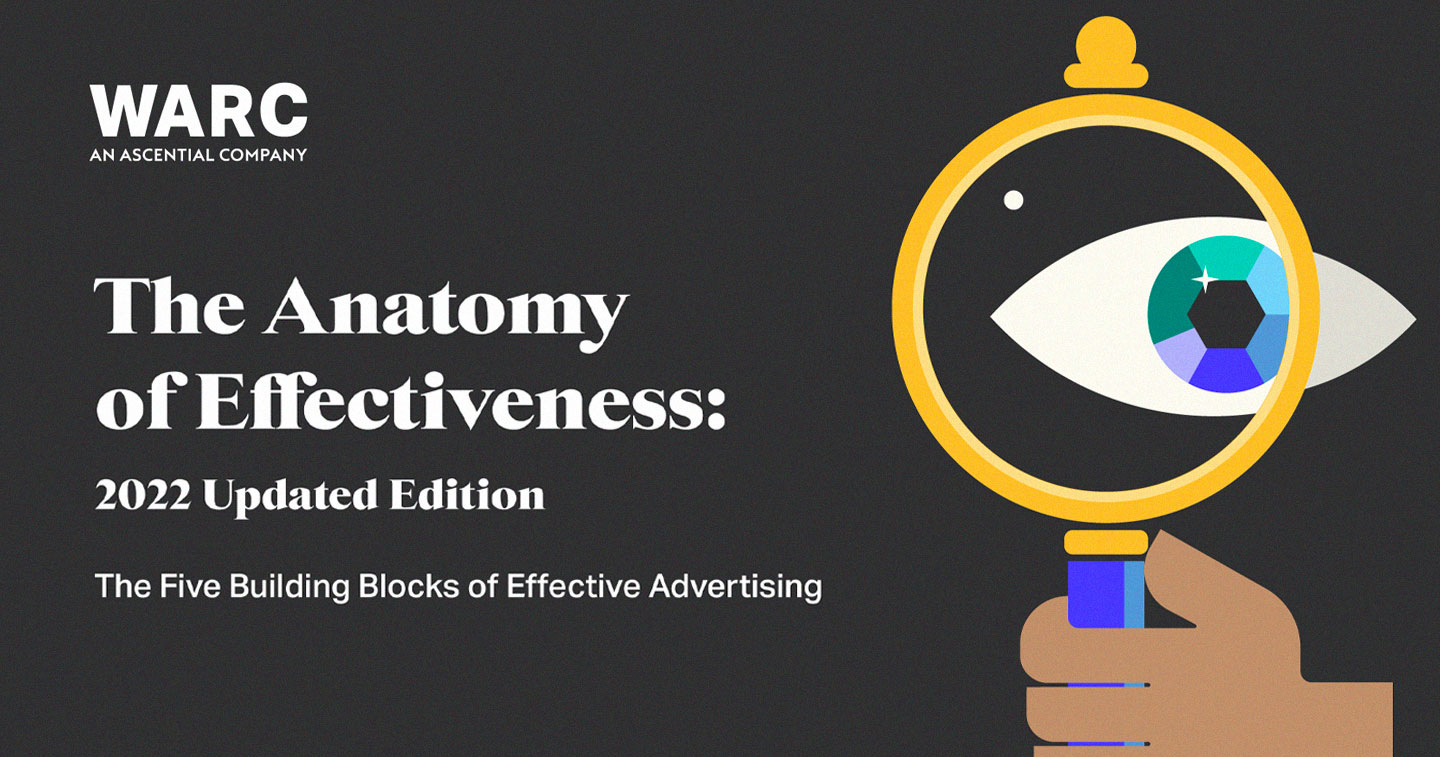LONDON, UK — An updated edition of international marketing intelligence service WARC‘s “Anatomy of Effectiveness” has been published, and it underlines that advertising is not driving the growth it should be. According to the whitepaper, we are currently experiencing a “crisis in creative effectiveness.”
WARC, in its efforts to present the key building blocks required to deliver commercial impact today, highlights five key priorities for brands seeking greater impact:
Invest for growth
The debate over advertising effectiveness often focuses on variables such as creativity or media choice. While those indeed matter, more focus should be given to the “structural” conditions that help determine a campaign’s success. Understanding how factors such as brand size, campaign investment, and category dynamics will determine effectiveness is a key first step when it comes to setting budgets and agreeing on objectives. Getting the right framework for investment is crucial if a campaign is to meet its potential.
Budget matters. Ensure you are spending enough money to hit your objectives, and focus that investment on driving penetration,
Balance your spend
The next challenge is setting the right framework for your investment to ensure sustainable success. Over the past few years, the idea that spend should be balanced has emerged. The language used varies, for example:
- Balanced by timeframe – long-term effects alongside short-term sales impact
- Balanced by messaging type – brand building alongside performance marketing
- Balanced by audience type – broad reach/whole category alongside in-market buyers
- Balanced across the buyer journey – upper funnel alongside lower funnel
Understanding the principles behind these concepts, and the need in each case for both to be achieved is a focus of a lot of current research. Whether you call it long vs. short, brand vs. performance, or upper-funnel vs. lower-funnel, plan for effectiveness across different timescales to deliver maximum growth.
Plan for reach
Campaign reach is becoming harder to achieve. This is forcing marketers to reconsider long-held assumptions about reach and frequency management. Several factors should be considered:
- Brand objectives, including the profile of the audience and budget available.
- Media selection, and the quality of context that each channel provides.
- Consumer purchase habits, and how buyers are most likely to convert.
As media consumption fragments, particularly among younger audiences, effective brands are achieving incremental reach through the integration of a broader range of channels and platforms.
Successful brands are also looking beyond total reach and viewability to consider the role of consumer attention, and how that varies across media.
Use media budget to reach as many potential category buyers as possible. But remember that all reach is not equal.
Be creative
Based on the first three points, it’s easy to see marketing effectiveness as a numbers game; spend the right amounts in a balanced approach that prioritizes reach. But once that framework has been set, the biggest single influence on success is less predictable. All other things being equal, creativity makes the difference.
There is widespread evidence that creativity delivers increased effectiveness when it produces communication that is distinctive, engaging, emotional, and has some longevity.
Creativity is the most powerful weapon under the marketer’s control. Look for creative ideas that have an emotional appeal even for consumers not currently in the market for the product.
Plan for recognition
Advertising must be associated with the brand behind it if it is to work. Planning for recognition involves creating shortcuts in consumers’ minds that make brands more memorable, impactful, and easy to recall. Failure to communicate brand properly is a common pitfall. Invest in and nurture the distinctive assets that will enable quick recognition.
The white paper has been created by distilling current industry evidence, case studies, and expert opinion, combined with WARC’s 30+ years experience helping the industry create more effective marketing.
The white paper, launched in conjunction with WARC’s Anatomy of Effectiveness hub, features new case studies, expert opinions and over 20 ‘Evidence’ decks. WARC clients can read the report in full. A complimentary sample edition is available for all here.










